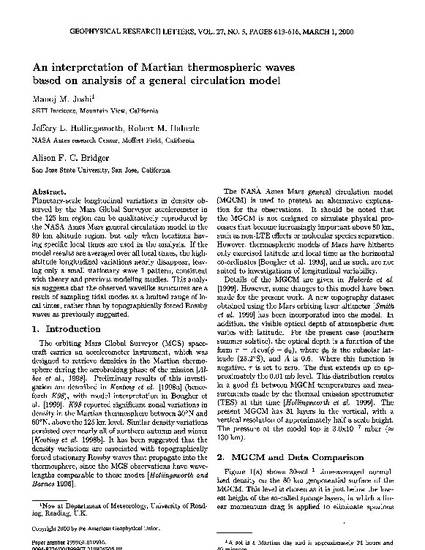
Article
An interpretation of Martian Thermospheric Waves Based on Analysis of a General Circulation Model
Geophysical Research Letters
(2000)
Abstract
Planetary‐scale longitudinal variations in density observed by the Mars Global Surveyor accelerometer in the 125 km region can be qualitatively reproduced by the NASA Ames Mars general circulation model in the 80 km altitude region, but only when locations having specific local times are used in the analysis. If the model results are averaged over all local times, the high‐altitude longitudinal variations nearly disappear, leaving only a small stationary wave 1 pattern, consistent with theory and previous modeling studies. This analysis suggests that the observed wavelike structures are a result of sampling tidal modes at a limited range of local times, rather than by topographically forced Rossby waves as previously suggested.
Keywords
- Aneroid altimeters,
- Atmospheric temperature,
- Computer simulation,
- Planets,
- Spectrometers,
- Wave propagation,
- NASA
Disciplines
Publication Date
March, 2000
DOI
https://doi.org/10.1029/1999GL010936
Publisher Statement
SJSU users: Use the following link to login and access this article via SJSU databases.
Citation Information
Manoj Joshi, Jeffery Hollingsworth, Robert Haberle and Alison Bridger. "An interpretation of Martian Thermospheric Waves Based on Analysis of a General Circulation Model" Geophysical Research Letters (2000) Available at: http://works.bepress.com/alison_bridger/5/
